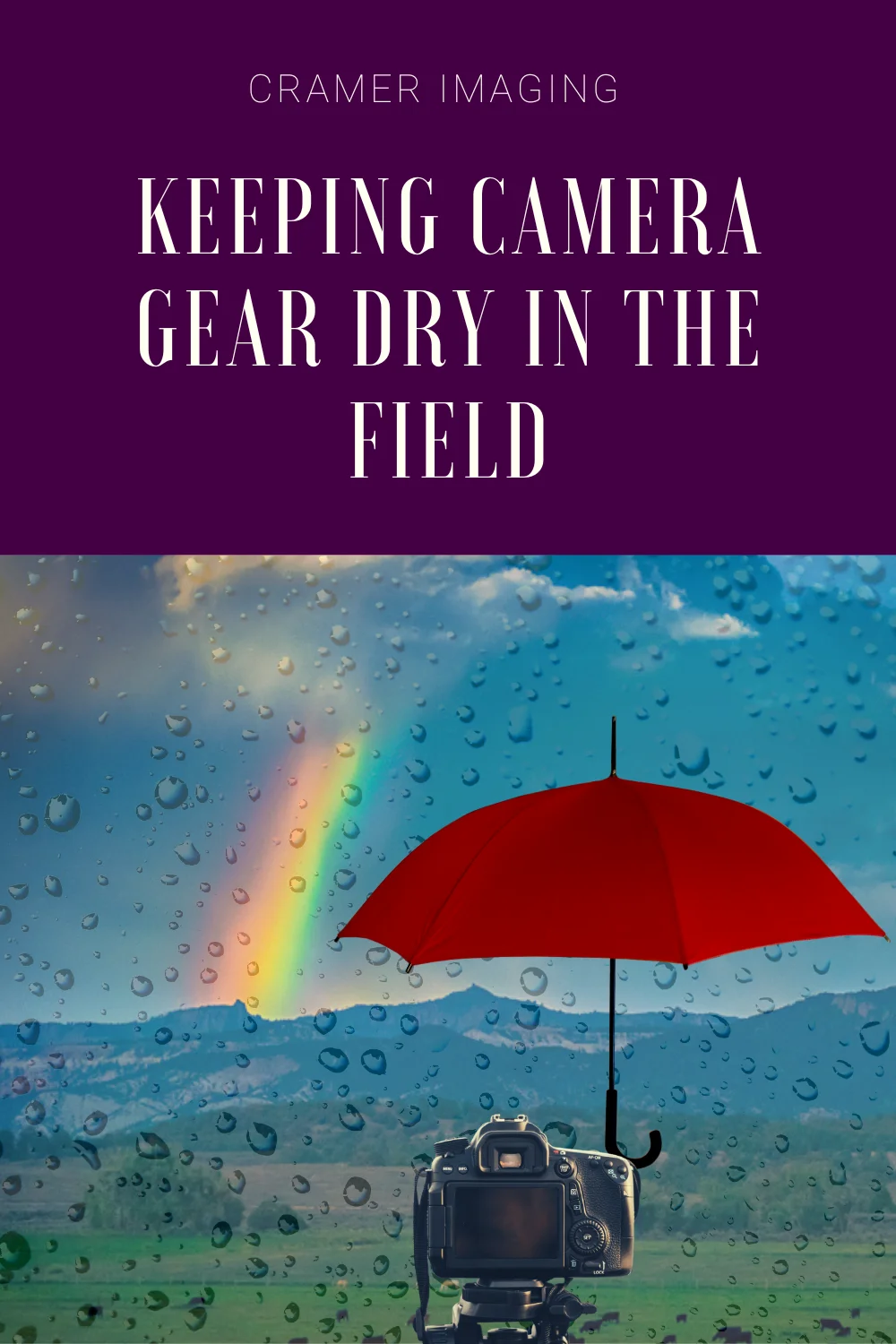
So, you’ve decided to take your camera gear out to get a shot but you’re worried about keeping it dry in the field. After all, rain happens and tents can leak. There’s all kinds of other ways where you could damage or destroy your camera gear with water. So how do you protect your investment by keeping your camera gear dry? We’ll discuss a few ways which we use.

How do you keep your gear dry when you take it out to use? There are all sorts of solutions for keeping your gear reasonably dry on your person while you are shooting. But what about when you’re storing it for the night or while you’re waiting?
Ok, let’s start with the simplest method. Your car trunk will generally keep things nice and dry. The inside of your car is often an even better choice. Car manufacturers go to a great deal of trouble to make cars water tight. You also gain the added security of hiding your camera gear from potential thieves. However, using your car trunk only works if you’re staying close by your car. That’s a major downside.
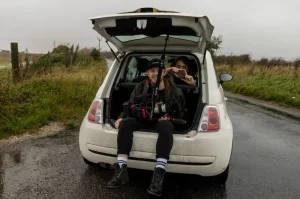
Of course, what do you do if you can’t have your car with you? There are a few good solutions, but our favorite is the U.S. Military Issue ammo can. They’re bulky and heavy so you won’t want to pack one very far. However, they are extremely well constructed and totally waterproof as long as they’re closed and the gasket is in good shape. Geocachers often choose ammo cans for geocaching storage. Keep in mind that you’ll find some geocaches stored water pretty much permanently. Ammo cans are nearly ideal for this purpose.

So, where do you get ammo cans? Army surplus stores sell them pretty much all the time. Inspect those cans carefully. Look particularly closely at the gasket. Surplus gear is often fairly beat up. Otherwise, keep an eye out in the camping section of a sporting goods store like Cabella’s or Sportsman’s Warehouse. I’ve even seen at some Costco. Just don’t buy the green plastic things designed to have a military look. Buy the real ammo cans.
You can pack your gear in an ammo can carefully. Perhaps use a bit of foam rubber to keep things from knocking around too much and the can should protect your gear well.
Ammo cans are great if you plan on car or RV camping. They are the absolute best idea for going down a river. Tie the can on the boat so it doesn’t end up on the bottom. Then, even if the boat is full of water, your gear should stay dry.
OK, so what do you do if you must hike into a location? Ammo cans are heavy and bulky for backpacking. If you must hike in to your site, there are a great many commercial products to help. You can choose from water resistant products and water proof zippers. Neither is totally waterproof but they do a pretty good job overall. Water resistant products are generally good for a quick accidental dunk but not for extended immersion. Waterproof zippers are more of a doubled zipper. They’re far better but can still leak a little. They’re also harder to access. The zippers also require proper silicone lubrication. In this regard, they are much like a standard Ziploc bag. Both, however, are inconvenient to access and to seal.

Roll top bags are the second basic type. These may or may not have a water resistant/proof zipper in them, but then they roll up to help prevent liquid from getting in. Rafting and kayaking enthusiasts often use them because they work so well. Their downside is that they are even more inconvenient to open and close.
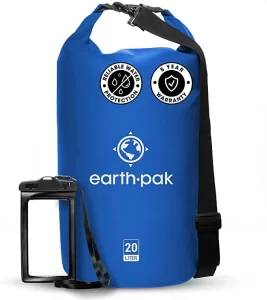
The advantage to most bags (as opposed to ammo cans) is that they are much lighter than ammo cans, are usually of a shape which you can easily carry, and they tend to float if dropped in water. Though a small leak is a concern, it’s far less of a concern than bulk and weight when hiking.
Ok, now you’ve protected your gear while you aren’t using it, but what about if you need to take pictures when it’s raining, or around a lot of water? Of course, those photo activities will entail a bit more water risk. For example, if you’re taking pictures from a boat or over a creek, you risk dropping something directly into the water. The best I can say is: don’t drop things. Keep the camera strap on your neck. Make sure strobes are attached and locked in place. Don’t position expensive camera gear over the water if you can avoid it. You don’t want to drop your strobe in a creek, even if you MIGHT be able to save it.

You can order a waterproof enclosure for your camera but keep in mind that these are designed to take your whole camera underwater. They also will likely cost two or three times as much as your camera itself. They would save a camera dropped in the water. After all, they’re made for taking a camera scuba diving. However, they are a definite overkill for something like rain.
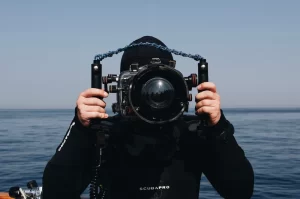
For a simple rain shower, we try to keep the cameras under cover if possible. If we cannot for reasons, then we have some nifty little camera covers made out of plastic bag material which keep the camera covered without interfering too much with its operation. When used correctly, they can also help keep the lens dry. While water on the surface of the lens won’t likely destroy the lens, it isn’t good for your photograph. These camera rain flies are cheap, light-weight, and collapsible into a tiny ball. You can probably find room for one in your camera bag no matter how full it is.
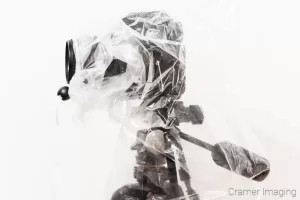

I would combine the camera rain fly with a cheap clear (or UV) camera filter. You can use these to keep the surface of your lens dry. Also, they are easy to clean and cheap to replace if damaged. Combining these two together will go a long ways to protecting your camera gear from the rain.
In a pinch, you might find you can rely upon your gear to protect itself from the weather. Some better camera bodies have built-in weather resistance. While they can’t handle too much water, a little rain likely won’t hurt them. Of course, you need a weather resistant lens also. If you have both a weather-resistant camera body and lens, then keeping your camera gear dry will become much easier for situations of light rain.
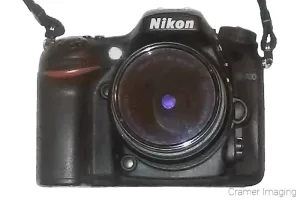
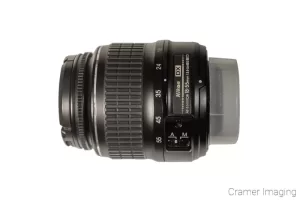
When you go out for a shoot, you need to keep expensive electronic camera equipment dry. For that you can either rely on luck, or you can take steps to keep your gear dry should the weather have other ideas. Take thought to both storing your camera gear for the night or transport in addition to using it in the field. Both situations bear consideration.
Do you have any more ideas for keeping your camera gear dry? Please share them in the comments section below.


Receive monthly updates in your inbox from us.

Join our email-only photo of the week club to get the full stories behind how we captured our favorite fine art landscape photos.
We respect your privacy
No More Results
Powered by atecplugins.com